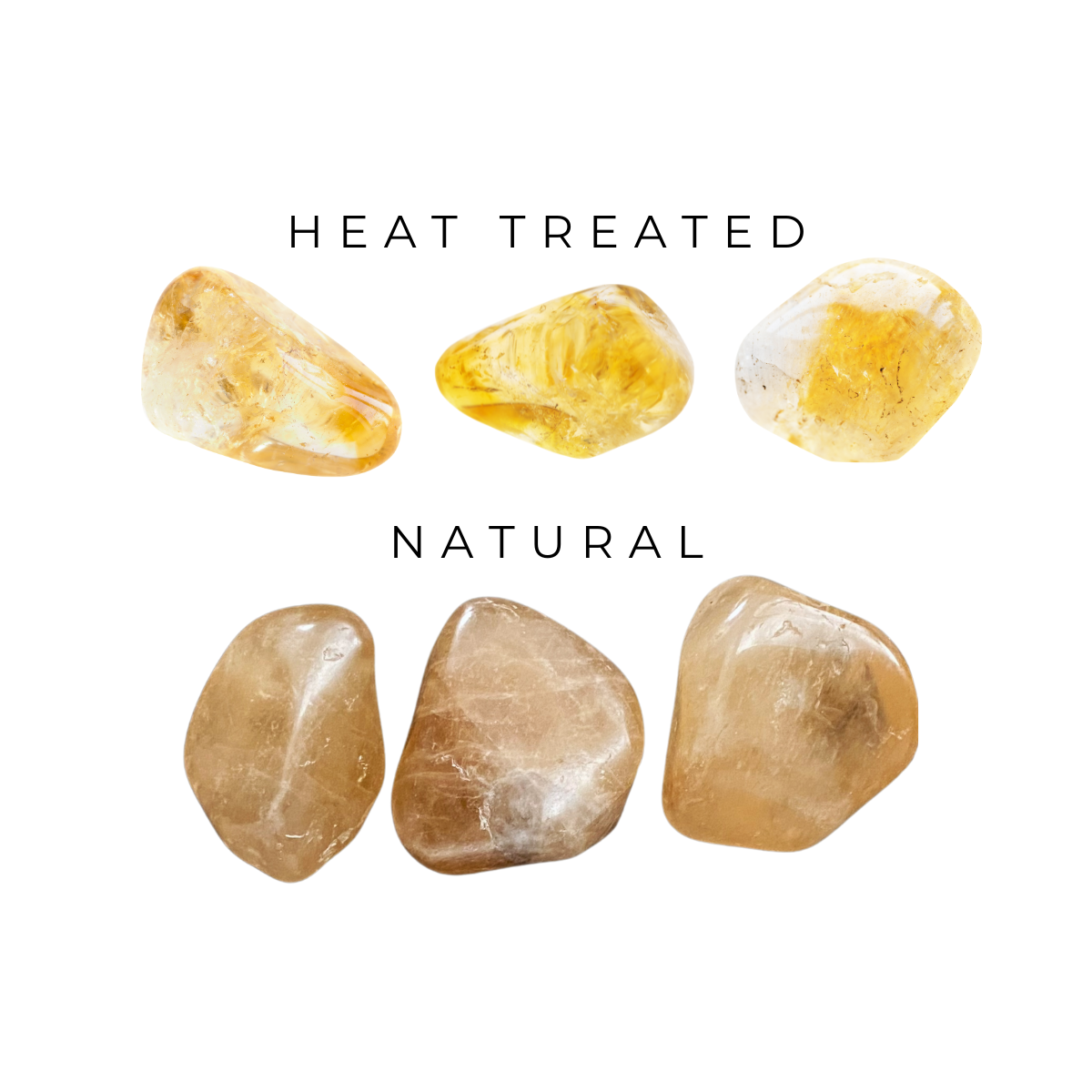How to Identify Heat Treated vs Natural Citrine

Citrine, with its sunny yellow hues, is a popular and beloved gemstone. However, distinguishing between natural Citrine and its heat-treated counterpart can be challenging. Understanding the differences in color, clarity, and other characteristics is essential for gem enthusiasts and buyers alike.
While some may argue that heat-treated Citrine isn't "real" Citrine, it's important to remember that it is still a genuine quartz crystal. There's nothing wrong with choosing heat-treated Citrine; it all comes down to personal preference and what resonates with you. Many people find its sunny, warm disposition uplifting, and it can bring joy and help you focus on your ambitions and goals. Whether natural or heat-treated, Citrine's energy can be a powerful addition to your crystal collection.
Click on the arrows below to learn about how to identify each type.
Heat Treated vs Natural Citrine
Identifying by Color
Natural Citrine: Typically displays a pale yellow to pale amber color. The hue is generally more even and subdued.
Heat-Treated Citrine: Often has a deeper, more intense yellow to orange color, sometimes with reddish or brownish tints. The color can be uneven, with white or lighter zones.
Identifying by Color Zoning
Natural Citrine: Rarely shows strong color zoning. The color tends to be uniform throughout the crystal.
Heat-Treated Citrine: Often displays distinct color zoning, especially near the tips of the crystal where you will often see white.
Identifying by Clarity and Inclusions
Natural Citrine: Usually has fewer inclusions and a more consistent clarity. However, clarity can range depending on the grade.
Heat-Treated Citrine: May exhibit more visible inclusions and internal fractures due to the heating process. Clarity also depends on the grade.
Identifying by Origin
Natural Citrine: Most commonly found in Brazil, Bolivia, Russia, and Madagascar.
Heat-Treated Citrine: Typically starts as Amethyst or Smoky Quartz, which are then treated to achieve the Citrine color. The source material is often from the same regions as natural Citrine.
Identifying by Price
Natural Citrine: Generally more expensive due to its rarity.
Heat-Treated Citrine: More affordable and widely available.
Identifying by Gemological Testing
Professional gemological testing can definitively determine whether Citrine is natural or heat-treated. Testing methods include spectroscopy and examining the stone under a microscope. However, due to the cost of the majority of the stones sold, this is not cost effective as professional testing would increase pricing.
Identifying by Energy Sensitivity
Those who are sensitive to energy say that the vibrations emitted from natural citrine are smoother in their wavelength. Heat treated citrine is said to have more energetic, vibrant pulses.

